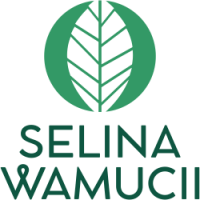Rhynchospora nivea - Uses, Benefits & Common Names
Kingdom:
Phylum:
Angiosperms
Order:
Poales
Family:
Genus:
Species:
nivea
ID:
519796
Status:
valid
Authors:
Boeckeler
Source:
wcs
Year:
1873
Citation Micro:
Linnaea 37: 527 (1873)
WFO Identifier:
wfo-0000519128
Common Names
- Snowy Beak-rush
- Snowy Beak Sedge
- Snowy Beaked Sedge
Searching for Rhynchospora nivea? Discover Suppliers and Request Free Samples Now!
Find Suppliers & Request SamplesDescription
Rhynchospora nivea (also called Snowy Beak-rush, among many other common names) is a perennial grass-like plant with small, white flowers. It is native to the southeastern United States, and is found in moist woods and meadows.
Uses & Benefits
Rhynchospora nivea is used as an ornamental plant in gardens and parks due to its attractive foliage and flowers. It is also used in traditional Chinese medicine for its anti-inflammatory and anti-bacterial properties.
Flower, Seeds and Seedlings
Rhynchospora nivea has small white flowers, with a few yellow stamens. The seeds are small, black and round, and the seedlings are small and delicate.
Searching for Rhynchospora nivea? Discover Suppliers and Request Free Samples Now!
Find Suppliers & Request SamplesCultivation and Propagation
Rhynchospora nivea is a perennial grass native to North America. It grows in wet areas such as marshes, swamps, and bogs. It prefers full sun to partial shade and moist, acidic soil. Propagation is done by seed or division. Seeds should be sown in a moist, well-drained soil in the spring. Division should be done in the spring or fall. The clumps should be divided and replanted in the same area.
Where to Find Rhynchospora nivea
Rhynchospora nivea can be found in the wetlands of North America, Europe, and Asia.
Rhynchospora nivea FAQ
What is the scientific name of Rhynchospora nivea?
Rhynchospora nivea
What are the common names of Rhynchospora nivea?
Snowy Beakrush, White Beakrush
What is the natural habitat of Rhynchospora nivea?
Wet meadows, marshes, and bogs
Species in the Cyperaceae family
Abildgaardia mexicana, Abildgaardia ovata, Abildgaardia schoenoides, Abildgaardia triflora, Abildgaardia oxystachya, Abildgaardia odontocarpa, Abildgaardia macrantha, Abildgaardia fusiformis, Abildgaardia pachyptera, Actinoschoenus repens, Actinoschoenus yunnanensis, Actinoschoenus aphyllus, Actinoscirpus grossus, Afrotrilepis jaegeri, Afrotrilepis pilosa, Amphiscirpus nevadensis, Arthrostylis aphylla, Arthrostylis planiculmis, Becquerelia clarkei, Becquerelia cymosa, Becquerelia discolor, Becquerelia merkeliana, Becquerelia muricata, Becquerelia tuberculata, Bisboeckelera irrigua, Bisboeckelera longifolia, Bisboeckelera microcephala, Bisboeckelera vinacea, Blysmus compressus, Blysmus mongolicola, Blysmus rufus, Blysmus sinocompressus, Bolboschoenoplectus mariqueter, Bolboschoenus caldwellii, Bolboschoenus capensis, Bolboschoenus fluviatilis, Bolboschoenus glaucus, Bolboschoenus grandispicus, Bolboschoenus laticarpus, Bolboschoenus maritimus, Bolboschoenus medianus, Bolboschoenus nobilis, Bolboschoenus novae-angliae, Bolboschoenus planiculmis, Bolboschoenus robustus, Bolboschoenus schmidii, Bolboschoenus stagnicola, Bolboschoenus yagara, Bolboschoenus koshevnikovii, Bolboschoenus biconcavus,
References
Johann Otto Boeckeler (1803-1899): Based on occurrence of standard abbreviation 'Boeckeler' in the authors string.
POWO record for urn:lsid:ipni.org:names:312336-1: Govaerts R (ed.). 2023. WCVP: World Checklist of Vascular Plants [Version 11]. Facilitated by the Royal Botanic Gardens, Kew. [WWW document] URL http://sftp.kew.org/pub/data-repositories/WCVP/ [accessed 20 April 2023].

